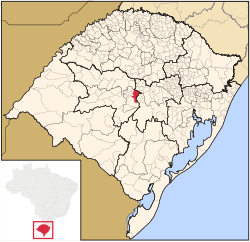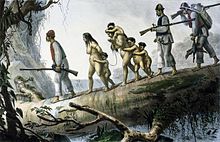
Dom Joseph I, known as the Reformer, was King of Portugal from 31 July 1750 until his death in 1777. Among other activities, Joseph was devoted to hunting and the opera. Indeed, he assembled one of the greatest collections of operatic scores in Europe. His government was controlled by Sebastião José de Carvalho e Melo, 1st Marquis of Pombal.

Pelotas is a Brazilian city and municipality (município), the fourth most populous in the southern state of Rio Grande do Sul, after Porto Alegre, Caxias do Sul and Canoas. It is located 270 km (168 mi) from Porto Alegre, the state's capital city, and 130 km (80.8 mi) from the Uruguayan border. The Lagoa dos Patos lies to the east and the São Gonçalo Channel lies to the south, separating Pelotas from the city of Rio Grande.
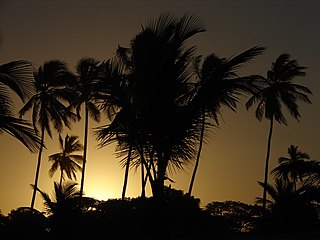
Ilhéus is a major city located in the southern coastal region of Bahia, Brazil, 211 km south of Salvador, the state's capital. The city was founded in 1534 as Vila de São Jorge dos Ilhéus and is known as one of the most important tourism centers of the northeast of Brazil.

Bento Gonçalves is a municipality located in the state of Rio Grande do Sul, Brazil. Created in 1875, it is one of the centers of the Italian immigration in Brazil. It is also known as the 'wine capital of Brazil' due to its vineyards and wine production. In 2020, its estimated population was 121,803 inhabitants.

Joinville is the largest city in Santa Catarina, in the Southern Region of Brazil. It is the third largest municipality in the southern region of Brazil, after the much larger state capitals of Curitiba and Porto Alegre. Joinville is also a major industrial, financial and commerce center.
Christian Mathias Schröder was a German senator from the city of Hamburg, Germany.

The Ruins of São Miguel das Missões, also known as São Miguel Arcanjo, and by its former Spanish name Misión de San Miguel Arcángel, is a UNESCO World Heritage Site located in the municipality of São Miguel das Missões, in the northwestern region of Rio Grande do Sul state, in southern Brazil.

Santo Ângelo is a municipality located in northwestern Rio Grande do Sul state, Brazil. It has about 77,568 inhabitants and the total area of the municipality is about 679 km². It borders Giruá to the north, and Entre-Ijuís to the south—it's linked to Santo Ângelo by the state road RS 344. The city is located 443 km (275 mi) from the state capital, Porto Alegre.

Sepé Tiaraju was an indigenous Guaraní leader in the Jesuit reduction mission of São Luiz Gonzaga and who died on February 7, 1756, in the municipality of São Gabriel, in the present-day state of Rio Grande do Sul, Brazil.

Sacisaurus is a silesaurid dinosauriform from the Late Triassic (Norian) Caturrita Formation of southern Brazil. The scientific name, Sacisaurus agudoensis, refers to the city where the species was found, Agudo in the Rio Grande do Sul state, whereas Sacisaurus refers to Saci, a famous one-legged creature from Brazilian mythology, because among the dozens of fossil material unearthed, 35 right femora were collected whereas only 1 left femur was found.

The Jacuí River is a river in Rio Grande do Sul state of southern Brazil. The Jacuí empties into the Guaíba River, an estuarine arm of the Lagoa dos Patos, a large coastal lagoon connected to the Atlantic Ocean.

Pinhal Grande is a municipality of the central part of the state of Rio Grande do Sul, Brazil.
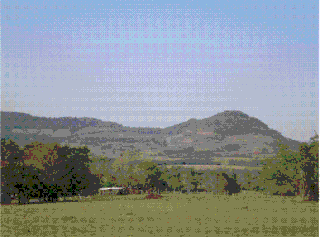
Nheçu or Chief Nheçu was Guaraní Indian leader who lived during the 17th century in the region of today's municipality of Roque Gonzales, in the Western part of the state of Rio Grande do Sul, in the south of Brazil.

Arroio do Tigre is a municipality in the state of Rio Grande do Sul, Brazil.

Ibarama is a municipality in the state of Rio Grande do Sul, Brazil.

Russian Brazilians are Brazilian citizens of full or partial Russian ethnic background or Russian-born people residing in Brazil. The term can also refer to someone with a Brazilian mother and Russian father, or vice versa. Today, there are close to 2 million descendants of Russian immigrants in Brazil, many of this population are descendants from the Volga Germans that immigrated to Brazil following their expulsion from the Soviet Union. However many are White Russians who arrived in Brazil right after the Russian Civil War in the 1920s. In the 1950s, a wave of Chinese immigrants belonging to the country's ethnic Russian community also arrived in Brazil.

The Quarta Colônia State Park Portuguese: Parque Estadual Quarta Colônia is a state park in the state of Rio Grande do Sul, Brazil. It protects an area of seasonal deciduous forest beside the dam of a hydroelectric power plant that started operation in 2001 on the Jacuí River. As of 2016 there was no management plan and the park had not been opened for visitors.
The Dona Francisca Hydroelectric Plant is a hydroelectric plant on the Jacuí River in the state of Rio Grande do Sul, Brazil, completed in 2001. It delivers 80 MW guaranteed power.

Dynamosuchus is an extinct genus of pseudosuchian archosaurs from the family Ornithosuchidae. It is known from a single species, Dynamosuchus collisensis, which is based on a partial skeleton from the Santa Maria Formation of Brazil. Dynamosuchus is considered a close relative of Venaticosuchus, which is known from the Ischigualasto Formation of Argentina. Ornithosuchids are one of many groups which lived in the Santa Maria and Ischigualasto Formations, which formed at approximately the same time and were ecologically similar. As a large scavenging reptile, Dynamosuchus helps to illuminate the trophic structure of the Santa Maria Formation. It also supports the hypothesis that ornithosuchids had diversified throughout South America by the start of the Carnian, and were not originally endemic to the Ischigualasto-Villa Unión Basin.
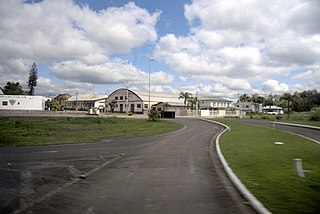
Nova Milano is a historic site and the seat of the fourth district of the Brazilian municipality of Farroupilha, considered the birthplace of Italian colonization in the state of Rio Grande do Sul. Originally the headquarters of the Caxias Colony, a pavilion was set up there in 1875 to welcome the immigrants who were waiting to be placed in the colonies in the region. In 1876 the colonial headquarters was transferred to Campo dos Bugres, but Nova Milano, on the margins of a very busy road, became a village, and in 1902 became the headquarters of the third district of Caxias. The arrival of railroads in 1910 determined a reorganization in the road and economic structure of the region, harming the growth of Nova Milano, which in 1934 was incorporated to the new municipality of Farroupilha as its fourth district, remaining until today with mainly rural characteristics.
